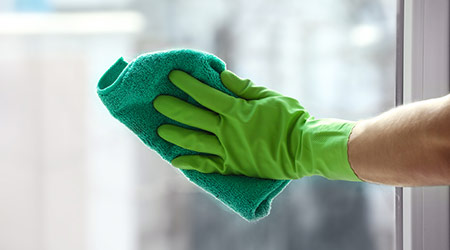The spread of germs from one surface or object to another and frequently occurs when performing janitorial tasks. Effective cleaning and disinfection can reduce this cross contamination, according to an article on the Infection Control Today website.
Contaminated mop heads and towels are common causes of cross contamination, but janitorial worker’s gloves can also be problematic.
Researchers have found that germs can survive on gloves and can be transferred to other surfaces during the cleaning process.
OSHA’s standards require the use of gloves to protect the hands of janitorial workers. But OSHA regulations don’t address cross- contamination issues or infection control.
The following suggested protocols are based on Centers for Disease Control and Prevention (CDC) guidelines:
Put on task-appropriate gloves before performing cleaning tasks and
change them in the following situations:
• When they become visibly soiled, torn or punctured
•After cleaning areas with high concentrations of germs, such as restrooms, kitchens
•When changing the color of the towel you’re using (with a color-coded microfiber towel systems)
•When going from building to building or floor to floor

 UF Health Hospitals Rely on Green Globes to Realize Their Full Potential
UF Health Hospitals Rely on Green Globes to Realize Their Full Potential How Healthcare Facilities Can Be Truly Disaster-Resilient
How Healthcare Facilities Can Be Truly Disaster-Resilient TriasMD Breaks Ground on DISC Surgery Center for San Fernando Valley
TriasMD Breaks Ground on DISC Surgery Center for San Fernando Valley Bigfork Valley Hospital Falls Victim to Data Breach
Bigfork Valley Hospital Falls Victim to Data Breach AI-Driven Facilities: Strategic Planning and Cost Management
AI-Driven Facilities: Strategic Planning and Cost Management